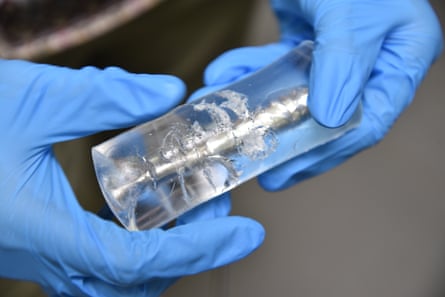Venomous snakes must strike fast to sink their fangs in prey before they startle – as quickly as 60 milliseconds when hunting rodents.
New research has captured – in slow-motion footage – the differences in how venomous serpents bite their targets.
Scientists studied 36 species of venomous snake, filming them at 1,000 frames a second as they struck an object made of ballistic gel that resembled the structure of human skin and muscle.
The study, published in the Journal of Experimental Biology, documented the bites of three snake families: vipers, elapids and colubrids.
Viper species, such as the sharp-nosed pit viper (Deinagkistrodon acutus), struck within 100 milliseconds, “walking” their fangs forward into a better position on the target before injecting venom, the researchers found.
Sign up: AU Breaking News email
“When the snake is about to hit their prey the vipers are actually able to fold out their fangs,” said the study’s co-author, Prof Alistair Evans of Monash University.
Elapids, such as the rough-scaled death adder (Acanthophis rugosus, native to northern Australia) and the Cape coral snake (Aspidelaps lubricus), tended to sneak up before striking and biting repeatedly.
Elapid snakes have permanently erect fangs, which tend to be shorter than that of vipers, Evans said. “Multiple biting … contracts the muscles around the venom gland.”
The elapid family also includes cobras and mambas, as well as venomous Australian snakes such as taipans, the eastern brown and the red-bellied black snake, but the specific strike patterns of these species were not studied.
Colubrids such as the mangrove snake (Boiga dendrophila) were “quite different in that the fangs are towards the back of the mouth,” Evans said. “In order to inject venom they have to open the mouth wider.
“Once they’re biting down they saw or rotate their jaws and cut into the prey, which presumably then gives better penetration of the venom.”
The researchers also observed some strikes in which the snake reached its target sooner than expected, as the “prey” was moving back and forth. In one case, the fang of a blunt-nosed viper (Macrovipera lebetina) snapped and went flying. “That was quite dramatic, obviously,” Evans said.
“This is likely how fang loss during feeding most often occurs, but this is the first time it has been caught on camera,” the researchers noted in the paper.
“Fangs have previously been found in snake scats, which means fangs often break off during prey penetration, remain stuck in the prey and are swallowed by the snake.”

The loss of individual fangs was not a problem, Evans said. “They’re replaced – the snakes make new fangs throughout their life.”
Evans said the findings on how different snake species strike would add to “information about their conservation and protection”.
“Only by knowing their diet and hunting methods can we be confident in that we’re going to put forward protection schemes that are going to be successful.”
The study’s lead author, Dr Silke Cleuren who is also of Monash University, tested the snakes at Venomworld, a venom production institution on the outskirts of Paris.
Dr Alessandro Palci of Flinders University, who was not involved in the study, said the research “fills gaps in our knowledge of snakes’ striking behaviour”.
“The differences in behaviour that have been reported for viperids, elapids, and colubrids correlate well with what we know about their fang anatomy,” he said.

.png) 5 hours ago
2
5 hours ago
2

















































